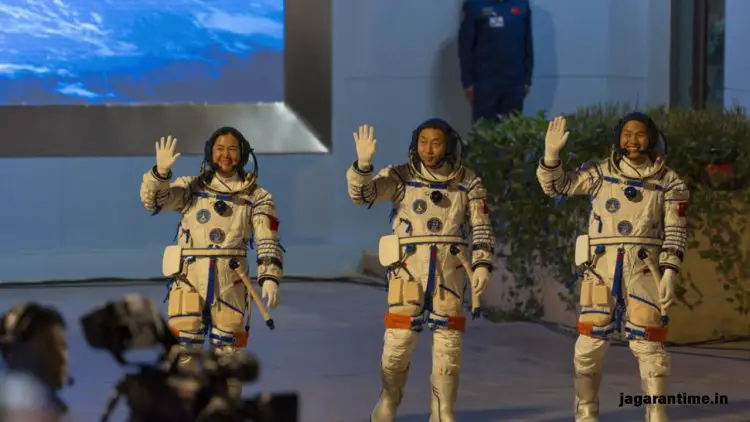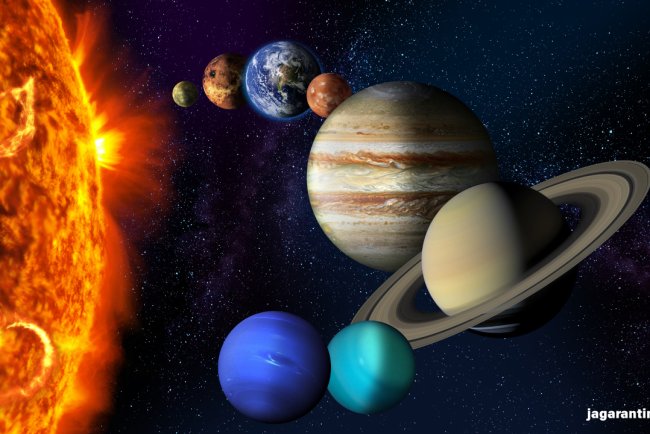China's Shenzhou-19 Astronauts Return to Earth After Successful Space Mission
China's Shenzhou-19 astronauts have successfully returned to Earth after a successful mission aboard the Tiangong space station. This marks another milestone in China’s space exploration program.

On a bright and historic day, China's Shenzhou-19 astronauts made a safe return to Earth after completing their groundbreaking mission aboard the Tiangong space station. This marks yet another significant achievement for China's ambitious space program. The mission not only added another chapter to the history of human space exploration but also showcased China’s growing prowess in space technology and innovation.
The Shenzhou-19 mission was a significant part of China’s ambitious plans to establish a fully operational space station, which will be a critical platform for research and international collaboration. As the astronauts re-entered Earth's atmosphere and descended to the surface, the world celebrated this important milestone in space exploration.
Shenzhou-19 Mission: A Brief Overview
Launched as part of China’s broader space station construction program, the Shenzhou-19 mission is one of the key steps in the development of the Tiangong space station, China’s own space laboratory. The mission aimed to conduct a variety of scientific experiments, improve the space station’s infrastructure, and prepare for future missions.
The Shenzhou-19 spacecraft was launched into orbit in a bid to further expand China's presence in space. With multiple astronauts on board, the mission’s objectives were to enhance the capacity of China’s space station and conduct vital experiments that could lead to further advancements in space science and technology. During their stay, astronauts aboard the Tiangong station carried out experiments in life sciences, material science, and astronomy, contributing valuable data that will help in future missions to the moon and beyond.
Key Achievements of Shenzhou-19 Mission
The Shenzhou-19 mission has been a massive success, bringing China closer to its goal of building a self-sustaining space station. Here are some of the key achievements of this historic mission:
1. Space Station Maintenance and Upgrades:
One of the primary objectives of Shenzhou-19 was to perform essential maintenance and upgrades to the Tiangong space station. This included the installation of new equipment and the testing of advanced systems that will be crucial for the long-term operation of the station. The upgrades to the space station’s infrastructure are essential for its future role as a research platform in space.
2. Scientific Experiments:
The astronauts conducted numerous experiments during their time aboard the space station. These experiments focused on various fields, such as space medicine, material science, and human health in a microgravity environment. The data gathered will help in understanding how human bodies react to extended stays in space and will assist in long-term missions, including those to the Moon and Mars.
3. Human Spaceflight Advancements:
The Shenzhou-19 mission also showcased advancements in China’s human spaceflight program. The spacecraft and the astronauts onboard were able to execute complex maneuvers, demonstrating the country’s growing expertise in space exploration. China’s space agency has made significant strides in human spaceflight, and the successful return of the Shenzhou-19 crew highlights the nation’s technological capabilities.
4. International Collaboration:
While the mission was primarily focused on China’s space station, it also opened the doors for potential international cooperation. With the Tiangong space station serving as a base for scientific research, China has expressed interest in welcoming international astronauts and researchers to collaborate on various projects. The success of the Shenzhou-19 mission solidifies China's position as a key player in the international space community.
The Return: A Safe and Precise Landing
After completing their mission objectives and spending several weeks in space, the Shenzhou-19 crew members began their return journey to Earth. The spacecraft re-entered Earth's atmosphere, and the descent was meticulously planned to ensure the safety of the astronauts.
The return capsule separated from the spacecraft and re-entered the atmosphere at a high speed. As the capsule plummeted toward Earth, it was protected by a series of heat shields that prevented it from burning up during re-entry. Once the capsule had slowed down, parachutes were deployed to ensure a soft landing in the designated area.
The successful landing of Shenzhou-19 in China’s Gobi Desert was hailed as a major accomplishment. The astronauts emerged from the capsule, safe and healthy, following their successful mission. Their safe return marked the conclusion of an incredible journey in space, with the crew returning to Earth with valuable insights that will benefit China’s space program and humanity as a whole.
The Role of Tiangong Space Station in China's Future Space Exploration
The Tiangong space station is expected to play a vital role in China’s long-term space exploration goals. It will serve as a platform for conducting experiments, developing new space technologies, and studying the effects of long-duration space travel on the human body. The space station will also support international research, making it an important asset for global scientific collaboration.
Tiangong, which translates to "Heavenly Palace" in Chinese, is expected to be a major player in the global space community. The station is designed to remain operational for at least 10 years, during which it will be regularly upgraded and maintained. Future missions to the space station will include advanced research on space technology, satellite deployment, and interplanetary exploration.
China’s plans for Tiangong go beyond Earth’s orbit. The space station will serve as a launching pad for future missions, including manned missions to the Moon and Mars. China’s long-term goal is to build a self-sustaining presence in space, and the success of the Shenzhou-19 mission is a key step in realizing that vision.
Shenzhou-19 and China's Growing Space Ambitions
The return of Shenzhou-19 astronauts to Earth marks another milestone in China’s growing space ambitions. Over the past few decades, China has made significant advancements in space exploration, including launching satellites, sending astronauts into space, and building its own space station.
China's space program has evolved from a latecomer in the space race to one of the leading powers in space exploration. The successful completion of Shenzhou-19 is yet another example of China's ability to carry out complex space missions and develop cutting-edge space technologies. With the Tiangong space station in full operation and plans for future lunar missions, China is positioning itself as a global leader in space exploration.
Looking Ahead: Future Missions and China's Space Goals
The success of Shenzhou-19 paves the way for future missions, including further upgrades to the Tiangong space station and missions to the Moon. In the coming years, China plans to send astronauts to the Moon and explore other celestial bodies, including Mars. The successful return of Shenzhou-19 astronauts strengthens China's commitment to becoming a dominant force in space exploration.
In addition to its exploration goals, China’s space program aims to inspire the next generation of scientists, engineers, and innovators. As China continues to invest in space technology, it is not only contributing to scientific knowledge but also creating opportunities for global cooperation and technological advancements that benefit all of humanity.
Shenzhou-19’s Impact on Space Exploration
The return of China’s Shenzhou-19 astronauts to Earth marks a significant achievement in the country’s ambitious space exploration program. The mission showcased China’s growing capabilities in human spaceflight, scientific research, and technological innovation. As China continues to advance its space program, the successful completion of Shenzhou-19 signals that the country is well on its way to achieving even greater milestones in space exploration.
As China prepares for future missions to the Moon, Mars, and beyond, the Shenzhou-19 mission will remain a key moment in the history of space exploration. It demonstrates the power of human ingenuity, the importance of international collaboration, and the endless possibilities that lie ahead as we continue to explore the universe.
Disclaimer: This blog is for informational purposes only. For more detailed and personalized advice on space missions, please consult experts in the field.













